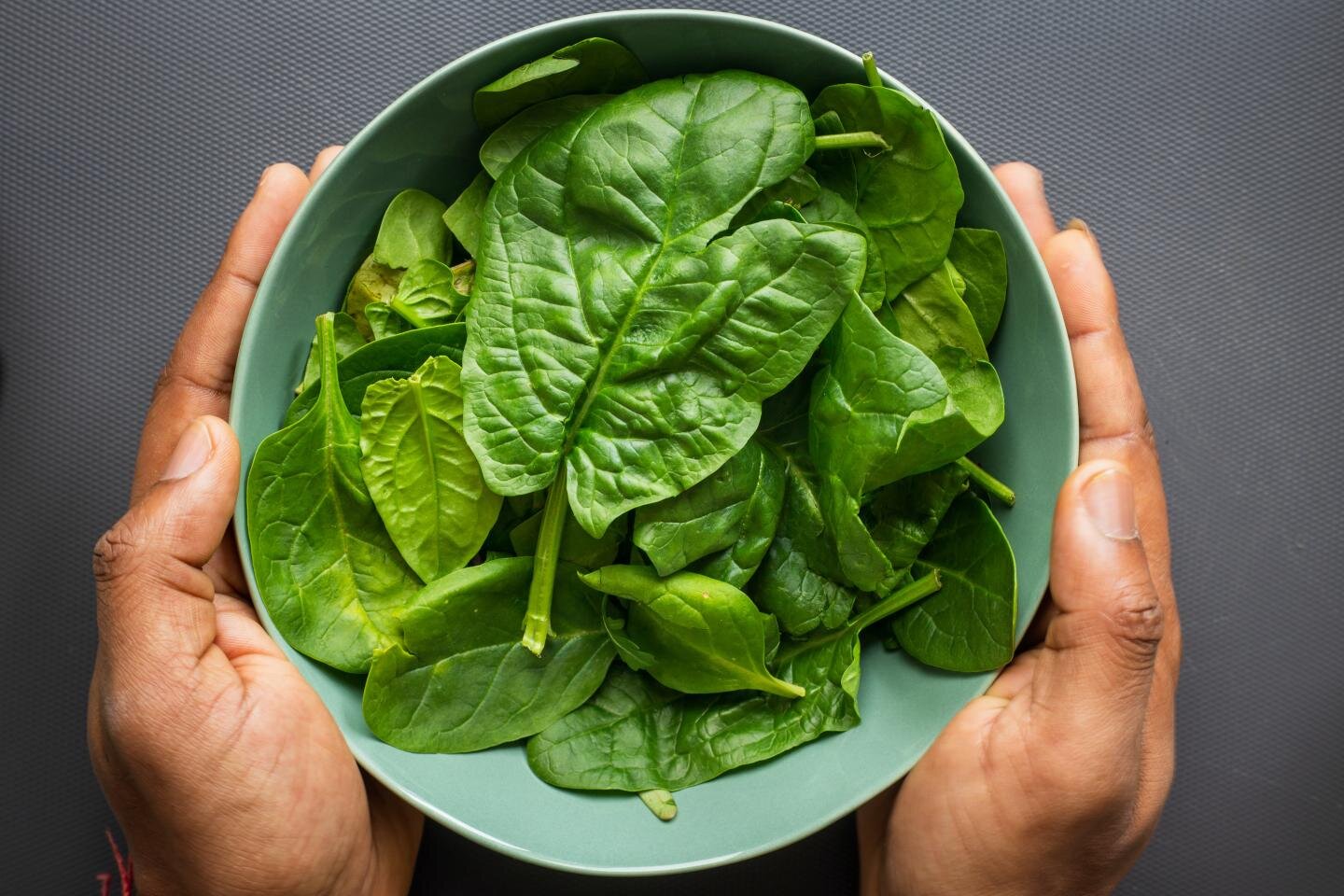
Eating just one cup of green leafy vegetables a day can boost muscle function, according to new research from Edith Cowan University. Credit: Photo by Louis Hansel @shotsoflouis on Unsplash
Eating just one cup of green leafy vegetables every day can boost muscle function, according to new research from Edith Cowan University (ECU).
The study, published today in the Journal of Nutrition, found that people who consumed a nitrate-rich diet, predominantly of vegetables, had significantly better muscle function of their lower limbs.
Deficient muscle function is associated with an increased risk of falls and fractures and is considered a key indicator of general health and well-being.
The researchers examined data from 3,759 Australians who participated in the Melbourne Heart and Diabetes Institute AusDiab study over a 12-year period. They found that those with the highest regular nitrate intake had 11% more strength in the lower limbs than those with the lowest nitrate intake. Up to 4% faster walking speeds were also recorded.
The principal investigator, Dr. Marc Sim, of the ECU’s Nutrition Research Institute, said the findings reveal important evidence of the role that diet plays in overall health.
“Our study showed that diets high in nitrate-rich vegetables can increase your muscle strength regardless of any physical activity,” he said.
“However, to optimize muscle function, we propose that a balanced diet rich in green leafy vegetables in combination with regular exercise, including weight training, is ideal.”
Muscle function is vital to maintaining good general health, especially bone strength later in life.
“With about one in three Australians over the age of 65 suffering a fall each year, it is important to find ways to prevent these events and their potentially serious consequences,” said Dr. Sim.
Go to the green
While green leaves may be some of our least favorite vegetables, they may be the most important, according to Dr. Sim.
The research found that nitrate-rich vegetables, such as lettuce, spinach, kale and even beets, provide the greatest health benefits.
“Less than one in ten Australians eat the recommended five to six servings of vegetables a day,” said Dr. Sim.
“We should eat a variety of vegetables every day, with at least one of them being green leaves to get a range of positive health benefits for the musculoskeletal and cardiovascular system.”
“It is also better to eat vegetables rich in nitrate as part of a healthy diet, rather than taking supplements.
Building knowledge
The study, a collaboration with the Institute of Physical Activity and Nutrition at Deakin University and the Baker Heart and Diabetes Institute, builds on Dr. Sim’s previous research on nitrate and muscle function in older women.
It also adds to the evidence linking vegetables to cardiovascular health, including a recent ECU study on cruciferous vegetables and blood vessel health.
Dr. Sim said the next step in his research will be to explore strategies to increase consumption of green leafy vegetables in the general population.
“We are currently recruiting for the MODEL study, which examines how knowledge of the disease can be used to encourage people to make long-term improvements in their diet and exercise,” said Dr. Sim.
Green leafy vegetables can prevent fatty liver
Marc Sim et al, Dietary Nitrate Intake Is Positively Associated with Muscle Function in Men and Women Independent of Physical Activity Levels, The Journal of Nutrition (2020). DOI: 10.1093 / jn / nxaa415
Supplied by Edith Cowan University
Quote: Green leafy vegetables essential for muscle strength (2021, March 24) retrieved on March 25, 2021 at https://medicalxpress.com/news/2021-03-green-leafy-vegetables-essential-muscle.html
This document is subject to copyright. In addition to any fair dealing for the purpose of study or private research, no part may be reproduced without written permission. The content is provided for informational purposes only.
